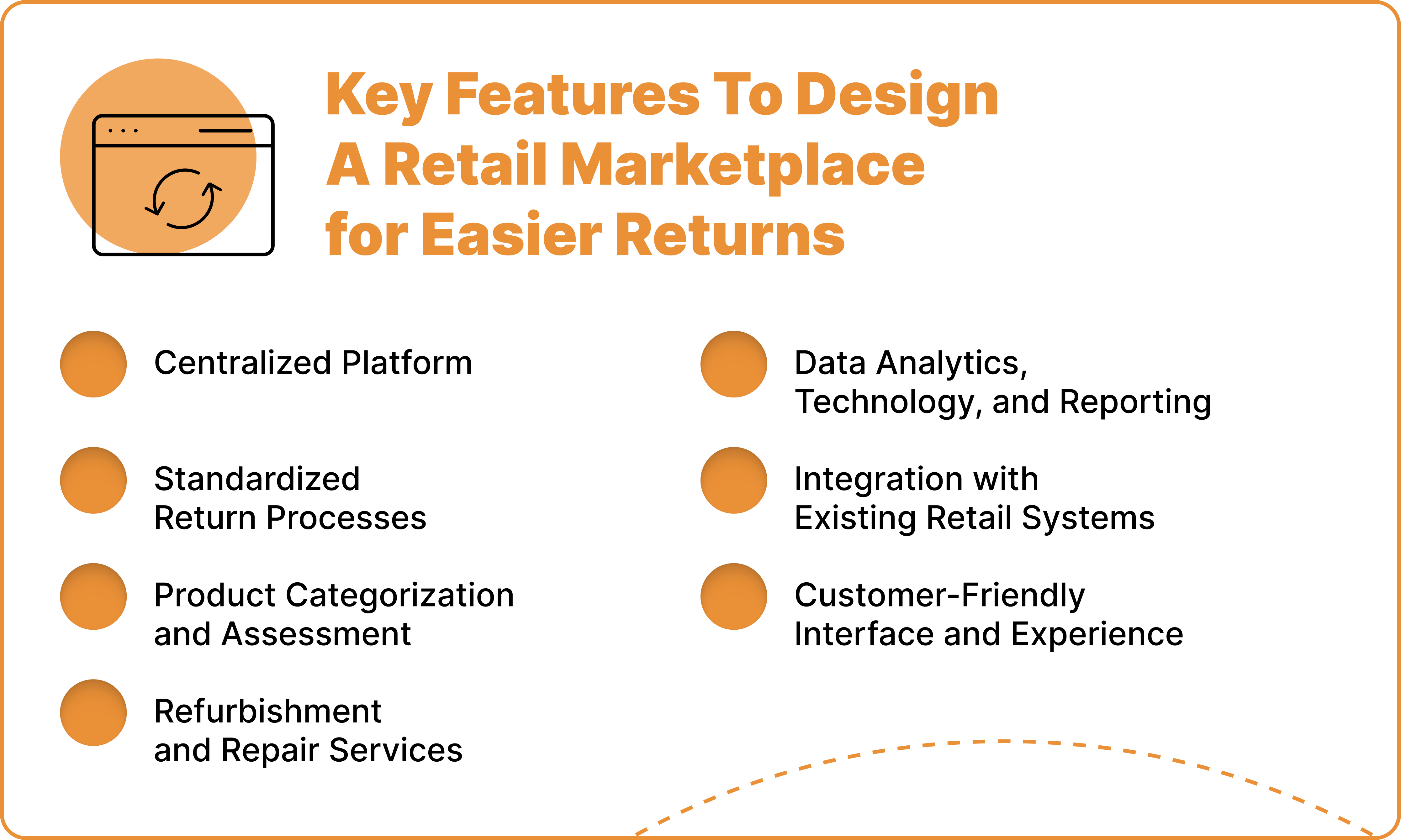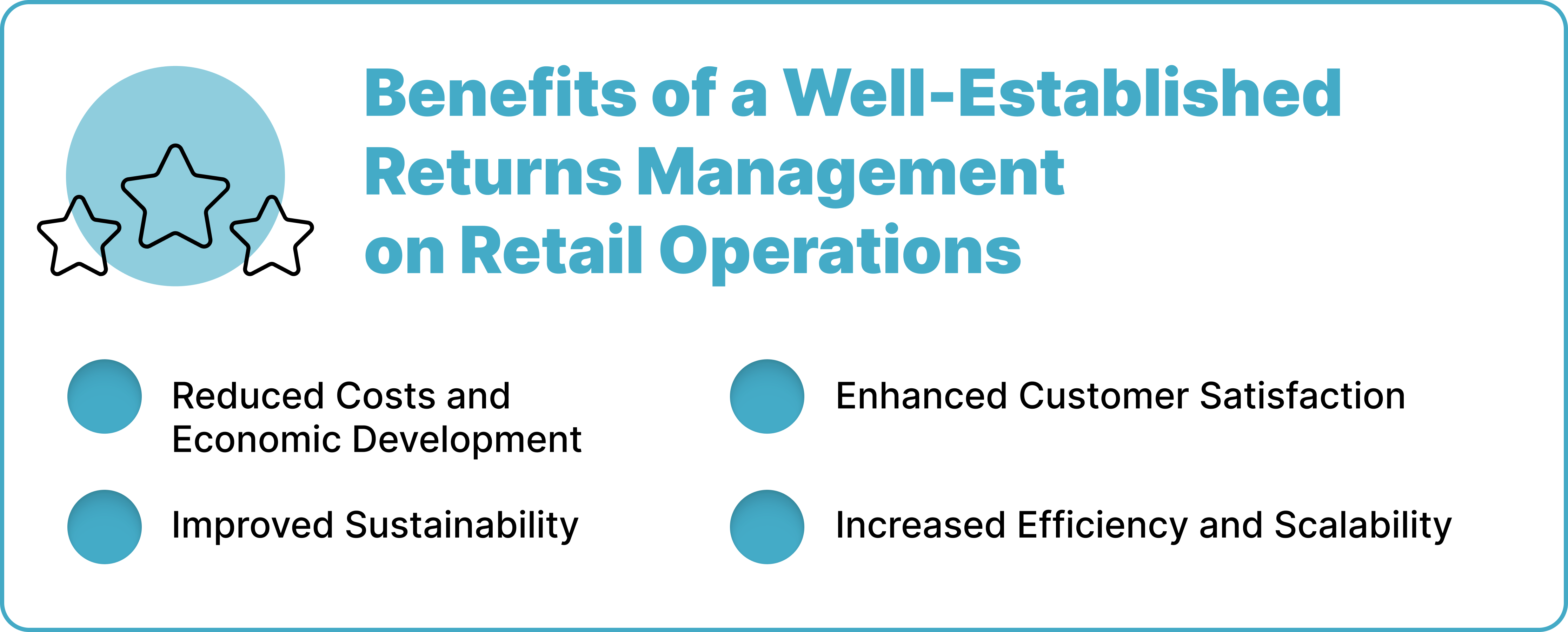Designing a Retail Marketplace for Easier Returns and Refurbishment

Before e-commerce and online retail platforms became mainstream, retailers weren’t so concerned about facilitating returns. This was because returns were not a logistics hassle, as storefront returns were pretty straightforward to process and revert to inventory stock.
However, as e-commerce and online retail marketplace(s) continue to grow their share in the retail market, the need for robust reverse logistics infrastructure is gaining more relevance. Facilitating product returns in an online marketplace is challenging, as the platform interacts with multiple businesses, each with its own return policies, and must accommodate product-specific return requirements. With better designs and strategies, it can operate much more seamlessly.
It is also crucial to design returns systems that consider the impact on future generations, ensuring sustainable practices that protect resources for those who come after us. This article will explore the challenges of running a seamless returns management system and the key features that need to be implemented into retail marketplace designs.
Challenges Plaguing Poor Returns Process Designs
Managing returns in the retail marketplace is challenging, especially for internationally-operated companies and cross-border returns. If not handled effectively, these challenges can cripple the entire reverse logistics process, leaving customers dissatisfied.
What are these challenges?
1. Inefficient Processes
When large retail marketplaces expand beyond their current returns management and reverse logistics infrastructure, the business may be forced to adopt manual handling and alter the standardization process. Both of these can ultimately make the process more time-consuming and error-prone.
Online retail platforms also struggle to manage returns from multiple channels, especially when forecasting is poor. Such inefficiency can increase operating costs and cause customer service delays, sparking outbursts.
2. Environmental Impact
In a world where climate change dominates mainstream news, advocating for solutions that promote economic development has become non-negotiable. However, without a proper reverse logistics and returns management system, many returned items — even those that can be refurbished and reused — will end up in landfills.
By disposing of these products, the retail marketplace and the businesses selling on it lose valuable resources. This not only impacts their profitability but also undermines their commitment to sustainability. Such practices hinder efforts to meet current societal and environmental demands while jeopardizing the ability of future generations to fulfill their own needs.
Returns also lead to increased greenhouse gas emissions, as vehicles transport these goods to and from customers, as opposed to forward fulfillment. Thus, for each product returned, it results in twice the greenhouse gas emissions. Unless improved sustainable returns practices and protocols are established, it may be difficult for the retail industry to slow down its environmental footprint, especially as it continues to grow.
3. Lost Value and Revenue
Retailers lose potential revenue when items that could be resold or repaired are discarded. When the returns process is poorly managed, it can lead to damaged or missing products, leading to revenue loss. Damaged returns can reduce the resale value of items and lead to higher and more costly disposals. Beyond the cost, it also limits the opportunities for refurbishment.
4. Customer Dissatisfaction
A seamless return experience is essential for maintaining customer loyalty and encouraging repeat business. Conversely, poor returns and reverse logistics systems cost customers a lot. However, that also means they are dissatisfied, which leads to the loss of future revenue. Complicated or slow return processes frustrate customers and damage their trust in retailers.
Key Features To Design A Retail Marketplace for Easier Returns

Because of the complexities involved in the reverse supply chain of retail marketplaces, it is important to consider foundational factors when designing the returns management process. It is these factors that will account for or determine how efficient and successful the retail marketplace’s reverse supply chain management will operate:
1. Centralized Platform
Integrating a centralized platform into returns operations will allow all stakeholders, including consumers and retailers, to manage the product returns process efficiently. The platform provides a single access point and simplifies the process, from initiating returns and tracking customer progress to sorting, decision-making, and handling refunds for retailers. Centralizing the returns management process helps reduce confusion for all parties involved and ensures smoother interactions.
2. Standardized Return Processes
Standardizing the return procedure for customers minimizes errors, allows for more sustainable development, and speeds up processing. Automated workflows based on standardized criteria will also help to improve consistency and reduce labor costs. This way, the retailers and logistics providers benefit from streamlined operations while customers enjoy a hassle-free returns experience.
3. Product Categorization and Assessment
Effective categorization ensures that returned items are handled appropriately. Products can be classified as new, used, or damaged, with standardized assessment criteria determining the next steps. Through proper categorization, retailers can make much more efficient and informed decisions on matters of support resale, refurbishment, or recycling. This allows them to maximize their value recovery.
4. Refurbishment and Repair Services
Setting up a robust refurbishment system and repair services can extend the lifecycles of products, such as batteries and electronic products. These systems and services can also reduce waste. They allow the marketplace to connect retailers with skilled technicians or refurbishment centers, creating opportunities to restore items to a sellable condition. This approach supports a circular economy and helps retailers recapture lost value.
5. Data Analytics, Technology, and Reporting
Data analytics enables retailers to monitor return trends, identify common product issues, and optimize processes. Analyzing return data can reveal areas for improvement in product design, marketing strategies, and customer service. Retailers can also use insights to predict demand for refurbishment and resale services.
6. Integration with Existing Retail Systems
Seamless integration with e-commerce platforms, inventory management tools, and customer relationship management systems ensures smooth operations. Retailers benefit from improved visibility across systems, while automation reduces manual work and errors.
7. Customer-Friendly Interface and Experience
A user-friendly interface makes it easy for customers to initiate returns, track their progress, and receive refunds. Clear communication about return policies and procedures builds trust and reduces frustration, creating a positive experience.
Benefits of a Well-Established Returns Management on Retail Operations

When designed properly, the returns management and refurbishment systems will have immense benefits for the retail marketplace, such as:
1. Reduced Costs and Economic Development
Streamlined processes and automation lower handling and disposal costs. Refurbishment and resale generate additional revenue, offsetting the cost of managing returns.
2. Improved Sustainability
Designing returns systems with reuse and refurbishment in mind reduces waste and conserves resources. Supporting a circular economy helps retailers meet sustainability goals and appeal to environmentally conscious consumers.
3. Enhanced Customer Satisfaction
An easier return process improves customer satisfaction and loyalty. Transparent communication and efficient service build trust, encouraging repeat purchases.
4. Increased Efficiency and Scalability
Automated workflows and standardized procedures allow retailers to effectively manage large volumes of returns. Scalability ensures the system can handle peak periods, such as holiday shopping seasons, without compromising performance.
Design The Right Returns Management System With ReverseLogix
Managing returns can be a real headache for businesses, but that is where ReverseLogix plays a key role. Our returns management platform makes the whole process easier and faster, especially for retail marketplaces that can manage overwhelming returns operations. In a similar way, our smart returns, powered by advanced technology, handle returns from start to finish, saving your business time and money. Whether you run a small online shop or a big company, our tools can help you.
Get a free demo with us today to see the difference.
Frequently Asked Questions
A centralized returns processing center with dedicated staff, automated sorting systems, and inventory tracking software is key. Integration with logistics partners ensures timely movement of returned goods.
Using AI-based tools and barcode scanning systems, items can be categorized as resellable, refurbishable, or recyclable based on their condition, type, and demand.
Technology enables efficient diagnostics and repair processes. Machine learning can predict repair costs and resale value, while smart tools assist technicians in refurbishing items faster and more accurately.
